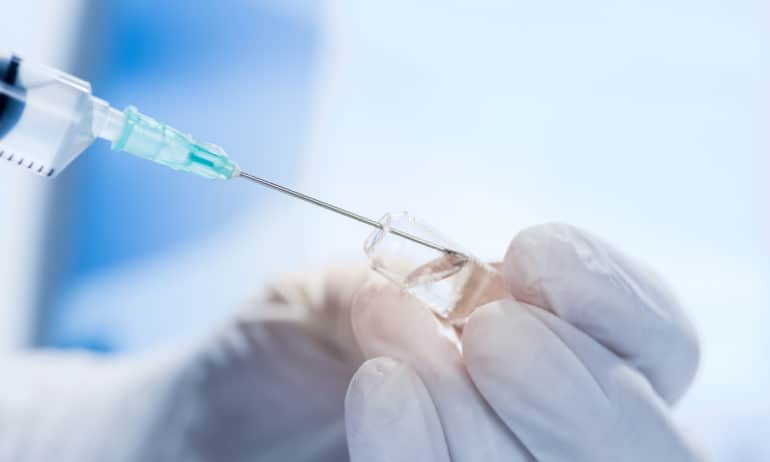A recent trial conducted by the World Health Organization (WHO) in Guinea for rVSV-ZEBOV, a trial vaccine for Ebola, is showing a 100-percent protection rate. According to a study published in The Lancet, of the 5,837 individuals given the vaccine, none contracted the virus 10 days or more after receiving the vaccination. This stands in contrast to the 23 Ebola cases that developed in the unvaccinated control group during the same timeframe, the study reports.
The development of the vaccine comes after the huge Ebola outbreak in West Africa from 2013 to 2016, when 11,300 people died from the virus. It is one of nine vaccines listed by WHO that are currently on clinical trial. “While these compelling results come too late for those who lost their lives during West Africa’s Ebola epidemic,” says WHO’s Dr. Marie-Paule Kieny, “they show that when the next Ebola epidemic hits, we will not be defenseless.” Due to the great success of rVSV-ZEBOV, the WHO says the vaccine could be available for mass use come 2018.
With financial backing from GAVI, a public-private vaccine alliance, the pharmaceutical producer Merck committed to making 300,000 doses of the vaccine available for emergency use should a future outbreak occur while the vaccine is awaiting approval.
The quick response of the international community in developing and testing trial vaccines demonstrates the potential to streamline and decrease the response time for mitigating future epidemics. “[The success of the rVSV-ZEBOV trial] is illustrating that it is feasible to develop vaccines much faster than we’ve been doing,” says Adrian Hill, a researcher involved in testing another Ebola vaccine at the University of Oxford’s Jenner Institute. This means that countries like Guinea, Sierra Leone, and Liberia, will no longer stand helpless in the face of Ebola, but will have a feasible means of counteracting.
The WHO hopes the rVSV-ZEBOV trial will serve as a model for handling future global outbreaks, changing the way we respond to epidemics from an approach that has been reactionary to one that is preventative.















